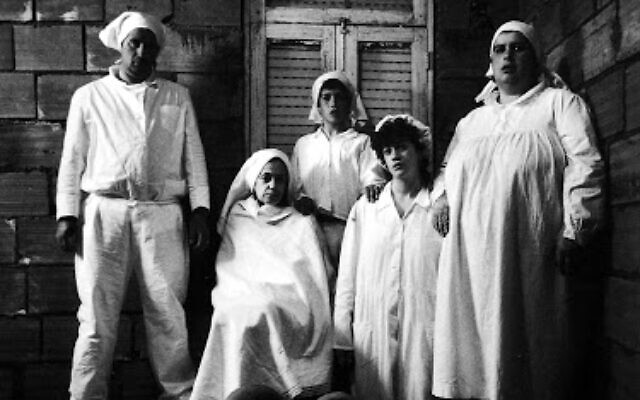The return of the Children of the Inquisition

THE phenomenon of the Jews of the Inquisition – the so-called Bnei Anousim – has now become a global Jewish issue. This group is estimated to be one of the largest Israeli demographics.
This tsunami of people creates serious halachic questions, such as how to “return” these Children of the Inquisition – some of whom can trace their unbroken Jewish matrilineal lineage back to the Inquisition – to Judaism.
Sephardi Bnei Anousim – children of the coerced converted – is a term used to define the contemporary crypto-Jews, descendants of conversos of Spain and Portugal.
Far less is known of these modern Sephardi Bnei Anousim, than their ancestors, the Sephardi Anousim – also sometimes referred to as “Marranos”, a pejorative term meaning pigs that should never be used. The Sephardi Anousim were those who practised Judaism in secret and, as a result, were targeted by the Portuguese and Spanish Inquisition. While rabbis sometimes disagree on which route to return the Bnei Anousim: full gentile conversion, certificate of return or lehumra misafek (conversion formality) – as a returnee, I understand the difficult emotions the journey entails.
I am originally from Lisbon in Portugal but my ancestors were from Monção, which used to be a Jewish village. I grew up not knowing I was Jewish and led a completely secular life.
Five years ago, I moved to Melbourne and worked part time with an Orthodox family. While there, I saw a mezuzah on the door, and said to myself, “My mother has this on her door too.”
The more I saw the practices at this home, the more curious I became. I continued to see similarities with practices my own family kept, especially when my maternal grandmother was alive.
Regardless of which route a Bnei Anousim candidate is required by their beth din to follow, they should all be called “returnees”, rather than “gerim” (converts). Gerim totally disregards their lineage and amounts to calling their ancestors gentiles. After the pain of learning the tortures to which our ancestors were subjected to keep their Jewish faith, including under threat of death, I believe being called gerim is a dishonour to our forebears.
As someone who, for years, navigated the complex journey to return, I feel that the use of the word, “returnees”, rather than “gerim” can alleviate the pain of those having to undergo full conversion. I also feel strongly that the rabbinate should investigate making a ruling about calling Bnei Anousim “returnees” rather than “gerim”.
A second very important matter, that may be overlooked by Ashkenazi rabbis who do wonderful work helping Bnei Anousim, is to teach returnees their Sephardi traditions. Many are returned through being taught Ashkenazi traditions, even though their ancestors were clearly Sephardi from the Golden Age, the age from where much of our Jewish heritage derives, such as the teachings of Maimonides.
The traditions and customs of their ancestors can be an important anchor for their return journey.
To keep a Jewish tradition is a holy thing and for that reason the Bnei Anousim are today able to share, through the internet, with others on the same journey, the traditions of their ancestors that were often maintained in the secrecy of their homes. Recognition of these traditions as Jewish can assist in identifying their Jewish roots. In the name of those Sephardim who died to keep their Sephardi traditions, it is important that today their descendants learn and perpetuate these same traditions.
To that end, I recently organised an international symposium – The Return of the Bnei Anousim. As a successful returnee, I decided it was so important to create awareness and understanding of the plight of the Bnei Anousim and to support their journey of return.
The symposium took place over two days, focusing on the journey of Anousim and the history of the Portuguese Inquisition, which is not as well known as the Spanish Inquisition.
On its first day, the conference attracted 845 viewers from 25 countries. On the second day, registrations increased to 28 countries with an equally high number of viewers.
Organising the symposium was a lot of work and I am very proud of the success that was achieved.
On a personal note, it was deeply moving to receive a letter from Israeli Prime Minister Benjamin Netanyahu supporting the conference and the importance of the issue of Bnei Anousim, as well as support from many others, including Josh Burns, the Federal Member for Macnamara.
I have also been involved in other projects to further the cause of the Bnei Anousim, such as facilitating the political connections necessary to gain approval for Genie Milgrom’s project to digitise the Portuguese Inquisition Archives. I worked with my friend Dr Ribeiro e Castro, author of the Portuguese law of return, who liaised with the Portuguese Minister of Culture to obtain approval for this project which will help prove personal Jewish lineage from all over the world dating back to the Portuguese Inquisition.
I want to continue to bring awareness to the issues surrounding the Bnei Anousim – this very vital part of our Jewish family.
For that reason I suggested to the rabbis taking part in this symposium to form a committee to discuss the plan of actions I am proposing for a universal ruling on this matter.
Shiloh Miriam is a Jewish descendant of the Anousim of Portugal. To follow her work, join the Facebook group, The Return of the Bnei Anousim at www.facebook.com/groups/881550752670303.

comments